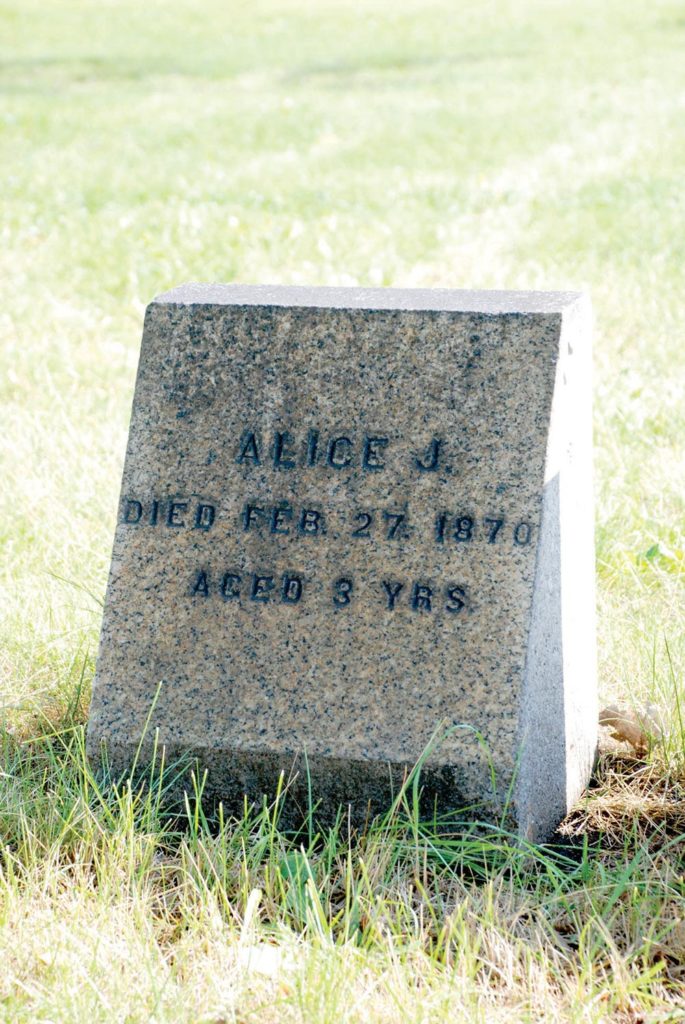Early in the morning on April 11, 1869, a man, identified in the paper only as “a Swede,” thought that he saw a ghost. He was walking by the Union School when he came across a pale man dressed only in a shirt. The man, who was in an “insensible condition,” was obviously not a ghost but was suffering from smallpox. In his delirium he had jumped out of the second story window at the city”™s Pest House and had been wandering the streets before he was found.
The man was H. M. Moores, a 32-year-old traveling salesman who was thought to be from Wisconsin. Several weeks earlier he had traveled to Austin, Minnesota, where he was selling “dampers,” a mechanism that regulated the heat produced by wood and coal burning stoves. He returned to Minneapolis and was staying at the Milwaukee House Hotel when he became sick. He was transferred to the city”™s Pest House in an effort to keep him from infecting others. There was only one nurse on staff and she had been caring for Mr. Moores around the clock for more than a week when she dozed off and Mr. Moores made his escape.
His chances of recovery were originally thought to be good but that turned out not to be the case. He died late in the afternoon on the day that he was found by the Swede. Whether the fact that he had run off played any part in his death is not something that we can know for sure, but the Tribune labeled his death a case of “criminal neglect” on the part of the Pest House staff and called for the City Council to undertake an investigation. If they did, it was not mentioned in the paper.
Pest houses, later referred to as quarantine hospitals, had been in existence in Europe since the 17th century. The houses functioned somewhat like hospitals but their primary purpose was to limit the spread of disease by isolating people who were suffering from communicable diseases (“pestilence”) from the general population.
In January 1869, a few months before Mr. Moores died, Mayor Hugh Harrison, had asked the City Council to take steps to establish a pest house in the city which they did. It was located just outside of the city limits in North Minneapolis (around what is now 26th Street North on land now part of Farview Park). As the city”™s population grew, it became necessary to relocate the pest house and in 1886 a new one was built in what later became St. Louis Park.
Patients were not the only ones placed under quarantine. An ordinance passed in January 1870 required that caregivers of quarantined patients also be quarantined. Furthermore, patients could only be moved to the Pest House after dark when few people were out and about and unlikely to come into contact with them.
In June 1869, St. Paul”™s city health officer reported that there had been 125 reported cases of smallpox that year. The Minneapolis Tribune, always in the business of promoting Minneapolis at St. Paul”™s expense, announced that quick action on the part of Minneapolis”™ health officer and City Council house had “completely eradicated the disease, so that not a single case remains in the city.” Although smallpox did not seem to infect as many Minneapolis residents, that claim was premature and ultimately wrong.
In February 1870, two children, Alice and Amos Rafter, aged two and 17 years old respectively, died from smallpox within a matter of weeks, and there were sporadic outbreaks for the next 50 years. Three people who died from smallpox in 1883, two of them from the same family, are buried in the Cemetery. The worst outbreak occurred in 1904 when six members of the Lockwood family died within between March 31 and May 10th, a period of fewer than six weeks.*

There was no known treatment for smallpox””there was only prevention. Smallpox was an airborne disease, spread through coughing, sneezing and spitting. Three out of ten people who contracted the disease died from it.
Edward Jenner had created a vaccine as early as 1796 but it took almost two hundred years and an estimated hundreds of millions of deaths before smallpox became the first and to-date only human disease to be eradicated. This amazing achievement came about because of a coordinated world-wide program of vaccination. In 1980, the World Health Organization declared the world free from smallpox.

Mr. Moores, the cemetery”™s first recorded case of death due to smallpox, is buried in an unmarked grave in the cemetery”™s Potters Field.
*Their family deserves their own story so watch for it in a future issue.









